Apple Announces the iPhone 6s and iPhone 6s Plus
by Joshua Ho on September 9, 2015 7:14 PM EST- Posted in
- Smartphones
- Apple
- Mobile
- SoCs
- iPhone 6s
- iPhone 6s Plus
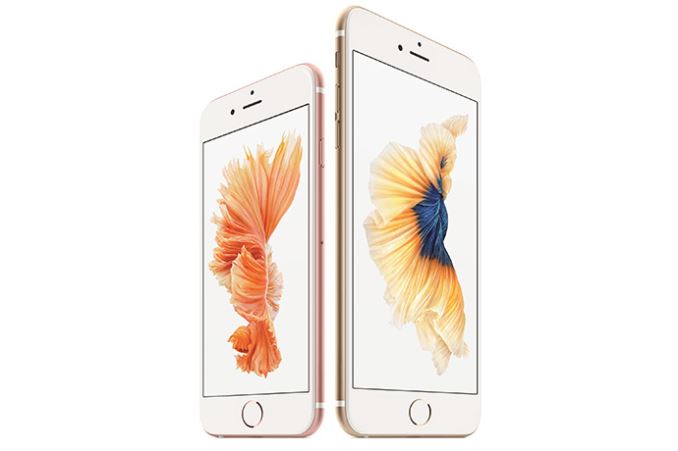
Today, Apple announced their refresh of the iPhone 6 lineup, the iPhone 6s and iPhone 6s Plus. For those that are unfamiliar with Apple’s “s” refreshes, these are years in which the iPhone doesn’t receive a visual design update but a number of internal aspects are significantly revised and updated. In the case of the iPhone 6s, this includes changes to display, SoC, new cameras, wireless connectivity, TouchID, and front-facing flash. I’ve summarized these changes in the table below.
| Apple iPhone Generations | ||||
| Apple iPhone 6 | Apple iPhone 6 Plus | Apple iPhone 6s | Apple iPhone 6s Plus | |
| SoC | Apple A8 | Apple A9 | ||
| Display | 4.7-inch 1334 x 750 IPS LCD | 5.5-inch 1920 x 1080 IPS LCD | 4.7-inch 1334 x 750 IPS LCD | 5.5-inch 1920 x 1080 IPS LCD |
| WiFi | 2.4/5GHz 1x1 802.11a/b/g/n/ac, BT 4.2, NFC | 2.4/5GHz 2x2 802.11a/b/g/n/ac, BT 4.2, NFC | ||
| Storage | 16GB/64GB/128GB | |||
| I/O | Lightning connector, 3.5mm headset | |||
| Size / Mass | 138.1 x 67 x 6.9 mm, 129 grams | 158.1 x 77.8 x 7.1 mm, 172 grams | 138.3 x 67.1 x 7.1 mm, 143 grams | 158.2 x 77.9 x 7.3mm, 192 grams |
| Camera | Rear Facing 8MP iSight with 1.5µm pixels + True Tone Flash Front Facing 1.2MP f/2.2 |
Rear Facing 8MP iSight with 1.5µm pixels + True Tone Flash + OIS Front Facing 1.2MP f/2.2 |
Rear Facing 12MP iSight with 1.22µm pixels + True Tone Flash Front Facing 5MP f/2.2 |
Rear Facing 12MP iSight with 1.22µm pixels + True Tone Flash + OIS Front Facing 5MP f/2.2 |
| Price | $99 (16GB) | $199 (16GB) | $199/299/399 16/64/128GB | $299/399/499 16/64/128GB |
For the most part, it’s really rather difficult to talk in great depth about these changes because right now we don’t have a lot of detail which will probably be saved for a full review. One example of something that we can’t test or really notice at all is the change to the build materials. While the display glass is still glass, Apple is claiming the strength of this cover glass is greatly improved from the iPhone 6. The aluminum of the back cover has also been strengthened, with the iPhone 6s using a custom 7000-series aluminum alloy to improve strength.
On the display side of things Apple has added a precise force sensing layer to the display module which allows for a whole range of new interactions with the smartphone. This force sensing technology is called 3D Touch by Apple, to differentiate from Force Touch on Apple Watch which is basically just a single force sensor to allow for a single force gesture within a context. The addition of a taptic engine helps to enable strong and useful haptic feedback when using 3D Touch gestures. While not part of the display, TouchID has also improved to enable much faster unlock speed.
The SoC is also brand-new and much faster. Apple disclosed up to 70% CPU performance improvement and 90% GPU performance improvement, and is built on a leading edge FinFET process. Judging by the lack of disclosure of specific process node the possibility that A9 will be using both Samsung 14nm and TSMC 16nm still exists. The Apple A9 SoC in the iPhone 6s will also have the M9 motion coprocessor built into the SoC itself, which should improve power efficiency by virtue of being on a leading-edge process rather than lagging behind on 28nm or something similar. The addition of always-on Siri voice activation is also possible due to the new A9 SoC.
The new camera is also part of the major announcement this time around as the iPhone 6s now has a higher resolution to support 4K video recording. This new camera is 12MP, with 1.22 micron pixel size which means that sensor size is effectively identical to the iPhone 6 and 5s at 1/3”. Technologies like deep trench isolation and modified color filter array are said to help with low light performance. Deep trench isolation has been seen before in camera sensors like the One M7 ST-Micro Cinesensor/Ultrapixel sensor, and Samsung’s ISOCELL sensors, which is likely needed in order to drive these smaller pixel sizes.
The front-facing camera has also been updated to a 5MP unit, with a display flash mode to enable low light selfies. Using the display for flash has been done before by companies like LG, but Apple’s claim for differentiation is that they’re detecting ambient light and using their display LED driver to boost LED brightness up to 3x the maximum brightness of the display in normal operation with the right white balance to ensure good color rendering.
The camera will also have Live Photos, which captures a photo that is a short moment in time with sound, which could also be said to be a video. If this sounds a lot like HTC’s Zoe feature, it’s probably because it definitely shares some similarities in that regard. However, as far as I can tell unlike HTC’s implementation Live Photos is mostly seamless and only shows animation when you do a force touch or if you’re swiping from one photo to another in the gallery.
On the wireless side, the iPhone 6s brings LTE-A with speeds of up to 300 Mbps. The modem design win wasn’t disclosed, but it’s probable that Qualcomm’s Gobi modems are in at least some iPhone 6s variants. Apple did disclose that the iPhone 6s can support up to 23 LTE bands, which makes the iPhone 6s one of the closest phones to single global SKU on the market today.
WiFi is also improved with two spatial streams for up to 866 Mbps on 5 GHz 802.11ac. The two antennas are likely to be integrated into the top and bottom metal sections of the phone, which likely means that peak WiFi performance will have to be achieved by not touching either section. Of course, this isn’t going to be another antennagate though because it’s likely that all RF that relies on the lower antenna to work will also have an antenna tuner to reduce detuning effects.
The iPhone 6s and 6s Plus will go on sale starting September 25th, and preorders begin September 12th. Pricing will be identical to the iPhone 6 last year, with the 16GB 6s starting at 199.99 USD on contract and the 16GB 6s Plus starting at 299.99 USD on contract. Unlocked pricing is likely to start at 649.99 USD and 749.99 USD respectively. Both phones will be available in silver, space gray, gold, and rose gold.


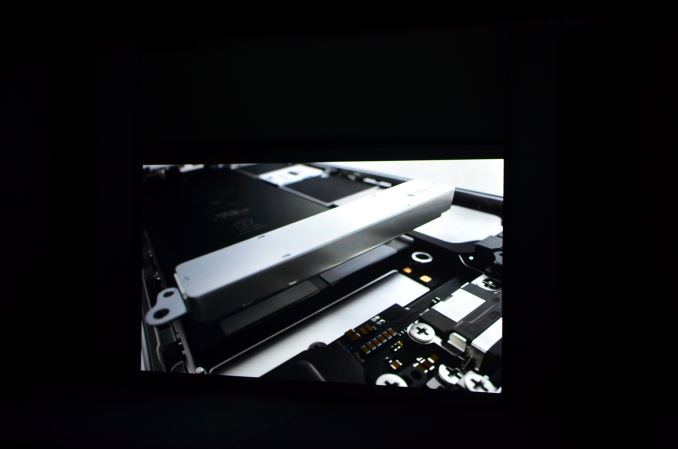

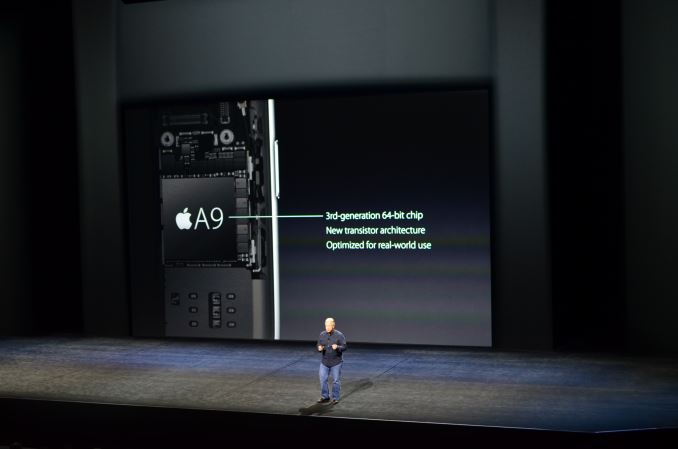
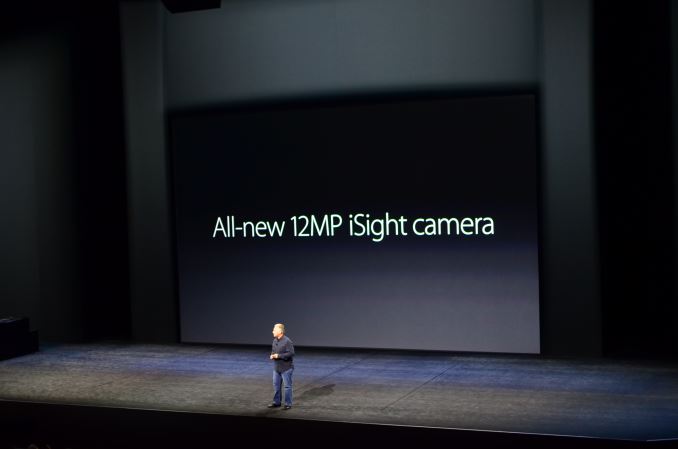
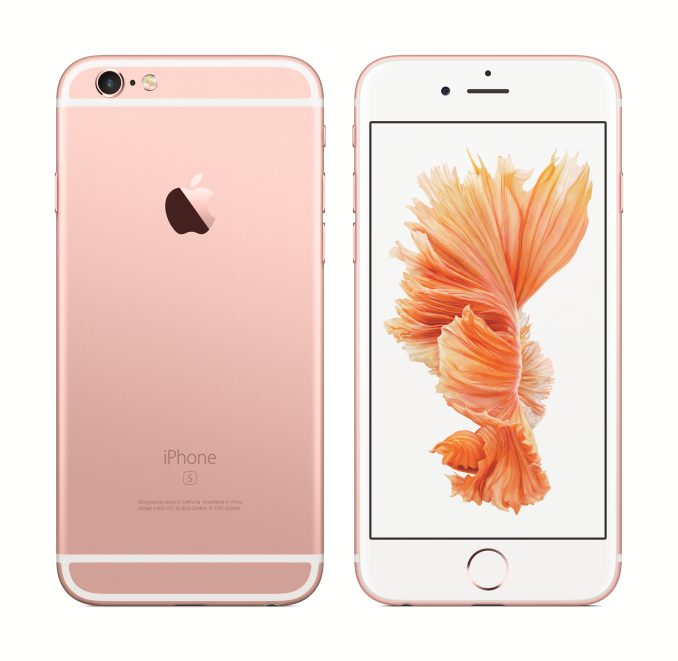
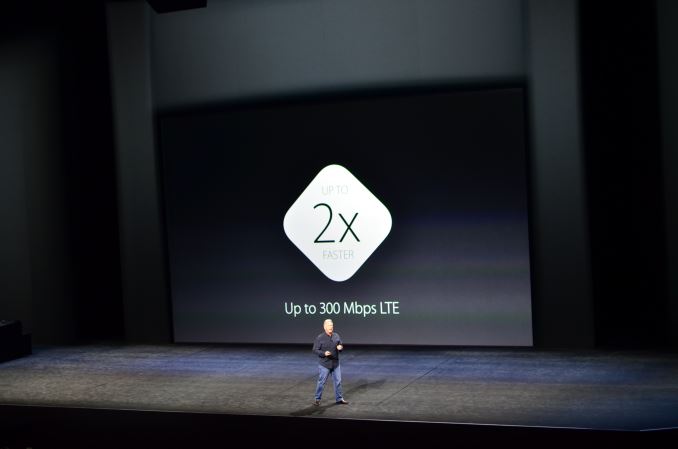
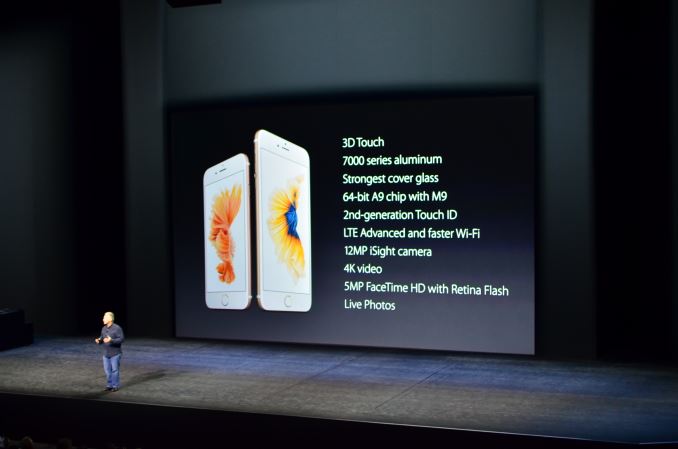









62 Comments
View All Comments
SpartanJet - Wednesday, September 9, 2015 - link
You have a link for that? Apple has once again skirted the issue carefully. If it had 2GB im sure it would have been advertised.ssiu - Wednesday, September 9, 2015 - link
No, for bizarre reasons Apple just doesn't like to talk about RAM. Even when iPad Air 2 was introduced last year with 2GB RAM (and 3 CPU cores).But journalists who are familiar with iPhone 6 and Safari reloading tabs due to 1GB RAM, should be able to do some experiments in their hands-on time and make an educated deduction? It won't be "official confirmation" but it would be better than "rumors and speculations". Report their experiments and their results, and let the readers come to their own conclusion whether "yeah I think that proves there is 2GB RAM" or not.
Personally I think they have 2GB RAM, simply because I don't believe they can get away with 1GB for the 4th year.
SpartanJet - Thursday, September 10, 2015 - link
Actually it was known durring the iPad Air 2 that it had 2gb ram.Apple even talked about the RAM being faster this time but avoided the more important issue being its 2015 and their phones still come with 1GB RAM which is severely limiting.
Brandon Chester - Thursday, September 10, 2015 - link
No, Apple has never stated the RAM capacity of an iOS device during their keynotes. It always comes out via benchmarks, dev sessions, or developers profiling apps on the devices.akdj - Friday, September 11, 2015 - link
They did indeed discuss memory bandwidth and thoroughput. Both doubling.While you could do this by building an eight lane vs four to the SoC, from the RAM, it wouldn't. Ale sense. Like others I think Apple milked the single GB as long as they could.
Funny thing, every game in parity I've got on iOS and my Note 4 w/3GB of RAM is more fluent, better gameplay and quicker communication and draws with the measley 1gb and 2core SoC ;)
osxandwindows - Friday, September 11, 2015 - link
If the iPad air 2 has 2gb of ram, then the iPhone 6s has 2gbThe iPad is always the first one to get a ram boost
asendra - Thursday, September 10, 2015 - link
If rumors are to be believed...Iphones 6s/6s Plus - 2GB
Apple TV - 2GB (Official)
Ipad Pro - 4GB
Thermogenic - Wednesday, September 9, 2015 - link
Live Photos is pretty much a copy of Living Images from the Lumia line of phones, which is also integrated seamlessly in modern (2014+) Lumias.osxandwindows - Friday, September 11, 2015 - link
It works way better on the Iphonelilmoe - Wednesday, September 9, 2015 - link
Something I really hate about Samsung is that some of their nice yet badly executed "gimmicks" can be really useful if they'd stick with them, improve on them, and perfect their functionality and APIs.Air View, that debuted with the GS4, is a very good example... It's hover nature had lots of potential, and the APIs could have been similar (or the same) of the hover features of the Note series (decreasing the work of development and app support)... It could easily replicate (or even exceed) the force touch functionality of the iPhone 6S...